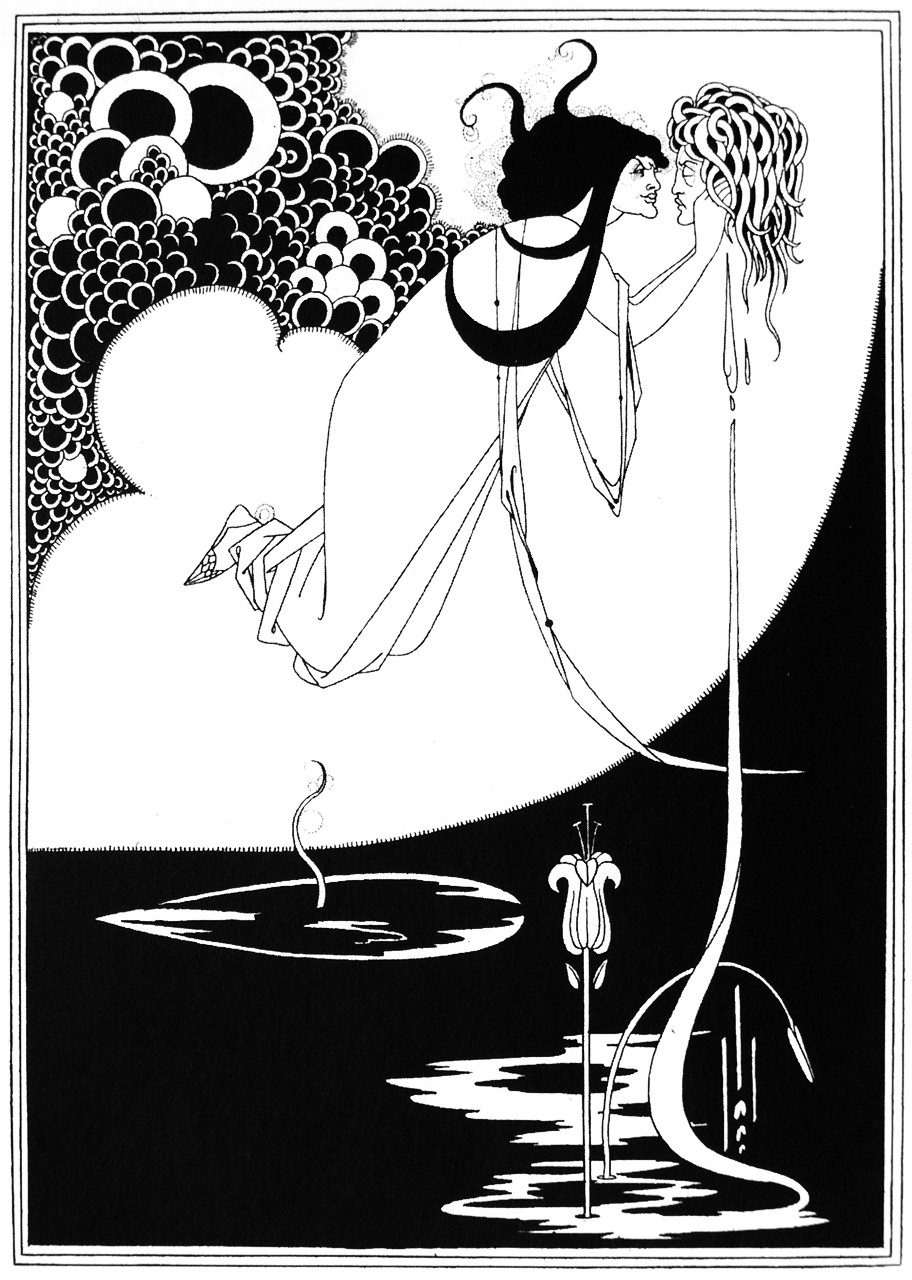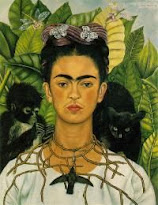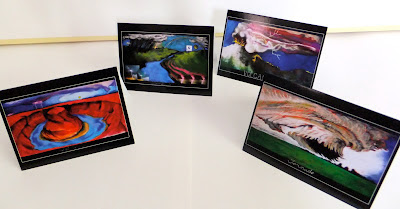2025
Dear Art Friends
The Tevlin Atelier
is delighted to announce
A new interactive experience
to stir the creative spirit
ART & MUSIC CLASSES
For children, teens & adults
Children’s Introduction to Voice & Piano
Children’s introduction to Voice or piano and Art
Beginner to intermediate voice & piano for teens & adults
Teen introduction to voice, piano & art
Adult Art (drawing & painting), & Music (voice & piano)
Children 6yrs - 30minutes - $40 (2 friends $60)
Teens 1 hour - $60 (with younger sibling-$90)
Adults 1 hour -$60 (with child or friend-$90)
For more information, please email me
Suzannetevlin1@gmail.com
July 26, 2025
The Spanish Question
I will be offering a new series of lectures this autumn. “The Spanish Question” will be an 8 week series of my very popular 2hour art talks.
We will concentrate on the remarkable work that came out of Spain, the most conservative western European country of the Renaissance and Baroque periods, and beyond.
The course will be held in my home studio. I can manage up to 8 adults. We will meet Friday mornings from 10 to 12, during October and November 2025. The cost will be $320 for the 8 week programme.
I’ll post detailed weekly lecture descriptions shortly. Let me know if you want to join our intimate little group of art connoisseurs.
The Northern Renaissance
The course will commence with a perusal of the delightful, illuminated manuscripts found in so many cultures during the early 9th to 14th centuries.
"Les Très Riches Heures du Duc de Berry" as well as Anne of Cleves' Book of Hours, Anne's gift to Henry VIII, will be considered with interest. We will also look at Anne Boleyn's Book of Hours and that of Johanna The Mad.
2) April 11,
Then, the enormous changes that occur with the development
of oil paint in the alchemical laboratories of the North, will be
considered.
3) April 18
Some other artists to be considered will include van der Goes, Campin, and Memling.
4) April 25
One needn't be verbose about the brothers van Eyck. Hubert & Jan van Eyck are beyond brilliant, touched by the finger of God. We will dip our humble selves in the pure inspiration, and wondrous beauty their work still gives us, making us realize that tomorrow will be a better day.
5) May 2
Albrecht Durer was an artist prince. He toured Europe, as would Peter Paul Rubens in later times, creating the first series of a traveller's watercolour sketches, and advancing the technique of engraving, thus allowing multiple inexpensive images to be available to the developing middle classes. His self portraits show a healthy self confidence;-))
We'll also have a look at the somewhat overzealous paintings of Albrecht Altdorfer; particularly his extravaganza panoramas, worthy of Heavy Metal Rock Band album covers.
6) May 9
The Breughel Art Dynasty
7) May 16
Drugs and religiosity gone mad; we’ll have a sometimes astounding, sometimes amusing and sometimes deadly serious look at both Hieronymus Bosch, Mattias Grunewald.
8) May 23
8 week course
Friday mornings 10 to 12
April 4, continuing for 8 weeks
Tuition, $250, in advance, by e-transfer please
Suzanne's studio on Concord Ave - Ossington Subway
The seemingly mysterious symbolism and iconography that went into the creation of their masterpieces is complex, and fascinating. To understand these works, as the populace of the time understood them, connects us, intellectually, to the universal.
Fall 2024
WARNING!!! This is a very cool course
Changes in Art and The World during the 19th century
PART II
From the French Revolution in 1789, through the 1800s, the 19th century is one of the most exciting times for change; in industry, science, medicine, government, philosophy, as well as art. The century of change takes the Western world from almost feudal leanings, to the Modern era. In this series of lectures we will discuss some important works from Neo Classicism, Romanticism, Realism, Impressionism, Post Impressionism, and Modern movements. There was so much artistic "action" during this time that the various movements occurred in tandem, one with the other. It is this idea of variousness and diversity that will reveal itself to us as we travel the real road that led to change and which in turn led to our own exciting world of contemporary art practice.
Friday, September 27
1) Cleaning up after the Enlightenment: The execution of Marie Antoinette, the end of Marat, and the short remarkable life of Charlotte Corday.
Painting in the shadow of Napoleon:
Goya and the Spanish connundrum.
Friday, October 11
2) Gericault, Delacroix & Ingres: Do I Smell Sulfur? The Battle Royale between the Neo Classicists & the rebel painters of Romanticism.
Wednesday, October 16
3) Manet: Influenced by the painter and anarchist, Gustave Courbet, Manet would help bring absolute change to the deeply conservative world of Parisian art.
Wednesday, October 23
4) Monet: In our consideration of Monet we will study the evolution of the most popular idea of Impressionism. We will also see how, though often maligned in the early years, Monet became the most highly valued artist of his time.
Friday, November 1
5) Pissarro: Another anarchist, this time from a wealthy Caribbean family, Camille Pissarro was a mentor to many young revolutionary artists including the future Post Impressionists Paul Gauguin and Paul Cezanne.
Friday, November 8
6) Degas: One of the greatest psychological portraitists, Degas, like many other 19th century intellectuals and criminologists, was interested in finding connections between the physical and the psychological. Bring your smelling salts.
Friday, November 15
7) Renoir: The most gregarious of the Impressionists, Renoir epitomized the joie de vivre that we have come to imagine as part of everyday life during the time of Baron Haussmann and Napoleon III.
Friday, November 22
8) Cassatt, Morisot & Valadon: Born within a few years of each other, these three women dealt, not only with the troubles brewing in European society, but also with the new frontiers being broached by their sisters in the rapidly changing world of art.
Other subjects that may come up during these lectures:
Frankenstein’s poor monsters: Early psychoanalysis on people we know, and boys playing with fire – galvanic theory.
Orientalism: The lure and fascination of The East.
Phrenology: How your physical appearance could land you in the gallows. Courbet, Degas, Cezanne, and others make unforgivable assumptions about the underclasses.
Prostitution and Cholera: Not an ideal mix. How 19th century artists responded to sex and pestilence.
Our 1st lecture will be on the wondrous William Blake. He was deeply inspired by Dante Alighieri’s Commedia. We’ll be spending some delicious hours looking at his visual thoughts on the great work. Later in the series we’ll consider The Pre Raphaelites’ ideas about it.
Last night, ruminating, I decided that my life would not have unfolded as it did without the Divine Comedy, so I’ve found 2 videos explaining what it is…other than life changing! The 1st video is short, but very good in its way, and the second is longer (obviously) and filled with Oxbridge blue stockings and lisping, Italianate young men (students at Oxford & Cambridge often aspire to a traditional college lisp-seriously). Delightful! It’s like being back in Cambridge.
Dante both troubled and enlightened my life for the first time when I was about 14. I was in Miss McKay’s special World Lit class. Miss McKay was a wonder. We read large excerpts from the Inferno, Purgatorio, and Paradiso (Later, in Italy, I read large parts of them in the original Tuscan). She encouraged us to question, as did Mr Dante. Every little 14yr old girl in my class, after having rolled up their school uniform, passed around the lip gloss, and stood as Miss entered the room, sat down and questioned why the heck that nice Mr Virgil couldn’t go to heaven???
The story of my life. So many questions……
Dear Art Friends,
Life! Thank goodness we are still part of it. This is a sad moment for many people in our wonderful world. Let’s hope, and work towards, making things better for those hardest hit by these outrageous fortunes.
My fantastic new course "Revolutionaries, Mystics & Reactionaries: Art in 19th century England", is shaping up. Yesterday, I sent my group 2 videos about the Congress of Vienna that I found quite informative, and entertaining. This is a period I love, filled with paintings that changed the way we look at the world.
I’m now sorting through various videos about The Crimean War, The Boer Wars, The Zulu Wars, The Opium Wars, The Boxer Rebellion, The Peninsular War, including vids on Waterloo, Trafalgar etc…. None of these videos is required viewing, all are simply, as we say, FYI. I’m trying to keep them short, though some are about 27 minutes, many are less, one is 3 minutes long. England was a pugnacious little country, and her history is reflected in her art.
The course is still open to new adherents, and will be accepting participants for 4 more weeks. We already have an excellent group; smart, amusing, interested. Just send me an email stating your desire to register. I’ll send you all of the videos plus other bits of course info once I receive your etransfer. My email address is: suzannetevlin1@gmail.com
Revolutionaries, Mystics & Reactionaries:
Art in 19th century England
British culture, society, and landscape changed during the 19th century. The building of the railroads, the Inclosure Acts (between 1786 & 1816 alone, independent landowners were reduced from 250,000 to 32,000), the industrialisation of looms and crafts, a fascination/fear of revolution, and an odd puritanical concern about the sexuality of piano legs; all these things combined to create a hotbed of creative expression and political debate that few generations, other than our own, would come close to understanding.
The reign of a tiny young queen and her Teutonic, and intensely cultivated new husband, would add grist to the mill of British contradiction; longing for, yet dreading, change of any kind.
We will commence with a lingering glance at the delightful William Blake; painter, poet, mystic, and all-round political pundit of the exciting international political scene. Then we will consider his excellent counterpart, John Constable, the miller's son. Then the breathtaking JMW Turner, who will leave us wondering how anyone could be so brilliant without seeming to try, will top off the first few talks.(spoiler alert: JMW worked harder than anyone)
The Pre Raphaelite Brotherhood will play an important part in the middle of our series as we spend a few days concentrating on several of their more influential, but quite reactionary heroes.; Dante Gabriel Rossetti, Holman Hunt, Ford Madox Brown, Burne-Jones, William Morris, and the very unusual John Ruskin, who went quite mad; everyone loves The Pre Raphaelites. Finally, we’ll have a quick look at Alma-Tadema, and Aubrey Beardsley, finishing up with a most interesting trio, precursors of our own world of ex-pat international artists; James Tissot, James Abbott MacNeill Whistler, and John Singer Sargent.
I’m already looking forward to our adventure. Why not come along?
I'll post a week by week itinerary soon.
February 2, Picasso – An artist of change and innovation, PP rewrote the story of art. He changed the rules and reconfigured the playing field. Love him or hate him, he’s an intensely interesting & disturbing character.
1, Introduction - History of Dutch Republic - Early works -The Pearl Paintings
2, Maps & Allegories
3, City & Landscapes, with or without the camera obscure?
4, The Question of The Daughter
5, Frans Hals, Judith Leyster, Jan Steen
6, Ladies & Letters
7, The Doctor is In
8, “And it must follow, as the night the day”; Rembrandt’s loss of Saskia
©️2023 This course description is the intellectual property of Suzanne Tevlin.
$235/student
Then, come the spring!!!
Places will be confirmed upon the receipt of tuition. Please be vaccinated for Covid. The class is encouraged to wear masks if they choose. The talks will normally have a short break, and there will be a short period reserved for questions and discussion at the end.
suzannetevlin1@gmail.com
"Art of Change: The Tumultuous & Invigorating 19th Century"
The most important & exciting period of artistic exploration,
scientific discovery, & political change in Western history.
A full, if still rough, description is below.
The enrollement will be very small, possibly no more than 10,
depending on the regulations at the time.
There are a few venues near Spadina & Bloor that will suit.
Those taking part will be required to be 100% Vaccinated.
E-mail me to get on the very special list.
University of Toronto - Canadian Perspectives Lecture Series
George Brown College
Treasures of The World Series - Art: Reflections on Society
Curious Minds Speakers Series
Campbell House Museum
The Arts & Letters Club
OCAD Continuing Studies
Toronto Public Library (Deer Park, Gladstone, Runnymede, Don Mills, Eatonville..)
Toronto Reference Library
Parsons Paris
Villa Kerylos, Beaulieu-sur-Mer, France
Ghost Ranch, Abiquiu, New Mexico
Women's Art Association of Canada
Art of Change:The Tumultuous & Invigorating 19th Century
WARNING!!! This is a very cool course
From the French Revolution is 1789, to the death of Queen Victoria in 1901, the 19th century is one of the most exciting times for change; in industry, science, medicine, government, philosophy, as well as art. The century of change takes the Western world from almost feudal leanings, to the Modern era. In this series of lectures we will discuss some important works from Neo Classicism, Romanticism, Realism, Impressionism, Post Impressionism, and Modern movements. There was so much artistic "action" during this time that the various movements occurred in tandem, one with the other. It is this idea of variousness and diversity that will reveal itself to us as we travel the real road that led to change and which in turn led to our own exciting world of contemporary art practice.
1) Cleaning up after the Enlightenment. The execution of Marie Antoinette, the end of Marat, and the short remarkable life of Charlotte Corday. Painting at a crossroads
2) Napoleon and Art; Goya and continental Romanticism – Blake fuseli
3) The Modern Prometheus: Gericault, abolition, & Frankenstein’s poor monsters. The artist’s early psychoanalysis, and galvanic therapy.
4) Delacroix: Do I Smell Sulfur? The Battle Royale between the Neo Classicists & the rebel painters of Romanticism.
5) Orientalism: The Lure and Sensuality of The East. What Edward Said Saw. Pre Raph?
6) The Enclosure Act of 1801: Constable and Turner approach the British Country Side. Romanticism in England. Gainsborough
7) Phrenology: How your physical appearance could land you in the gallows. Courbet, Degas, Cezanne, and others make unforgivable assumptions about the underclasses. Sarah Baartman
8) Prostitution and Cholera: Not an ideal mix. How 19th century artists responded to sex and pestilence. Pre-Raph
9) Anxiety as The Millennium Approaches: Whistler, Sargent, court cases, and the Americans.
10) Van Gogh Gauguin, mummies, The young Signor Picasso sees The Scream.
Blake 1757-1827
Eight of The Greats
After a close look at Picasso and Matisse we will go on to discuss Surrealism, the New York Schools, the European Schools and the British Schools, including Francis Bacon, Lucian Freud and David Hockney. We will discuss the rise of women painters, the Harlem Renaissance and much more.
The series will start on October 11, that's a Wednesday, and run for 8 weeks.
It will be from 1 to 3, in the Campbell House Ball Room.
You must pay in full, for the entire course,at least 2 weeks in advance.
The cost for the 8 lectures will be $250.00
Critiques
Is your work at a stand-still? Perhaps you're in a bit of an artistic rut? All artists, whether professional or amateur, trained or autodidact, need advice and constructive criticism to keep them moving along the road to creativity and self-expression. Suzanne offers in-house critiques to individual artists or small groups of artists.
Cost $250 per session (approx. 2 hrs)
Please e-mail suzannetevlin@sympatico.ca to arrange a mutually convenient time to meet.
Super cool Tevlin Talks Art T-shirts for my art pals....
To order your Tevlin Talks Art T-shirt just send me an e-mail.
Available in medium or large, they cost $40 each.
They are very, very nice.....as elegant as a T-shirt can be
These excellent reproductions of my own paintings are perfect for thank you notes, invitations, even birthday greetings. All cards are 5" X 7", have a pristine interior - you add the greeting - and come with a white envelope. To order, just e-mail me. You can pick them up at my studio, or I can mail them to you.
 |
| Crow Iconica, variety pack of 5, $25.00 |
The "Large Bowl of Fruit (with crows)"series has 4 cards.
 |
| Large Bowl of Fruit (with crows), variety pack of 4, $20.00 |
"The Darwin Series" contains 5 cards.
"The Weather Series" contains 4 cards.



























































